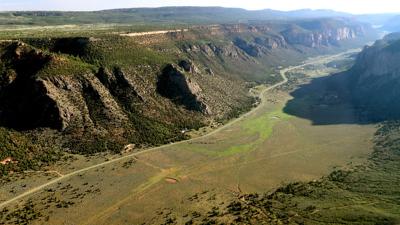
Unaweep Canyon, connecting Whitewater and Gateway southwest of Grand Junction, is famed for being the site of a geological and geographic oddity in that water in part of the canyon flows one way, and in the other part, the other way.
It’s a canyon in which Colorado Highway 141 tops out at Unaweep Divide at more than 7,000 feet in elevation, the spot where gravity dictates whether water ends up in East Creek or West Creek.
Now that same divide has become the setting for a tug-of-war of another sort, between a power utility’s efforts to provide cleaner and yet still reliable electricity to its customers, and a growing number of people concerned about what impacts that would have in the case of a major hydroelectric project proposed just west of the divide in the canyon.
“I’m all for green energy. I just don’t know how green this is,” said Paul Ashcraft, who has owned property west of the divide for more than 30 years. In 2009, he built his house there.
Ashcraft now faces the prospect of possibly losing property, and maybe his home, to the lower of two reservoirs proposed by Xcel Energy for what’s called a pumped storage hydroelectric project. The proposal has generated concerns about potential impacts to everything from wildlife, to the scenery along a highway that’s a designated Scenic Byway, to recreation, and to landowners like Ashcraft.
Ashcraft built his house himself, but now is wondering about the wisdom of making upgrades to a home he might someday lose.
“I’m afraid to do anything, like to put new countertops in,” he said.
For Xcel, the project is a potential big step in trying to produce energy in a more sustainable, carbon-free way.
“Capability for pumped storage is increasingly valuable, especially as we’re trying to convert to wind and solar,” said Brad McCloud, area manager for community relations for Xcel in western Colorado, speaking to local residents in a community meeting on the proposal in May.
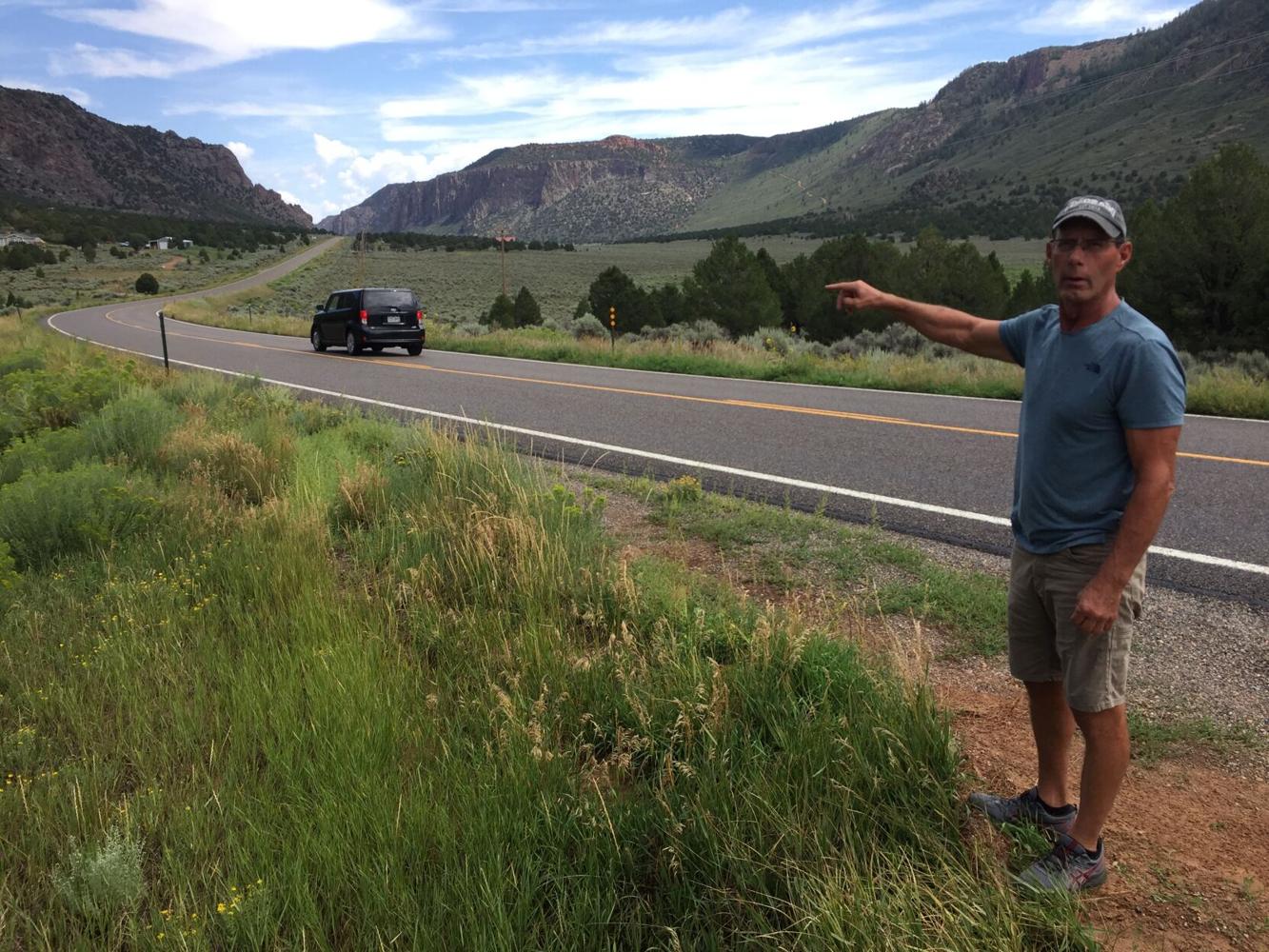
Xcel outlined its project in an application for a preliminary permit submitted to the Federal Energy Regulatory Commission last August. The project would allow for water to be released from a higher reservoir to a lower one, producing hydroelectric power along the way, with the water then pumped back to the upper reservoir for reuse.
Xcel says excess electricity produced at night or when there is less demand or excess renewable energy is available would be used to fill the upper reservoir, with the water then released to generate power when it’s most needed.
“Pumped hydropower storage technology can balance load on a system, enabling large power plants and generating sources to operate at peak efficiencies,” it said in its application.
It says that would help it provide a more diverse, carbon-free energy portfolio, enhancing its integration of variable renewable power such as wind and solar while providing capacity to store energy, akin to a battery, improving grid stability and energy security.
“The project could help advance (Xcel subsidiary) Public Service Co. of Colorado’s goals providing 100% carbon-free electricity by 2050 while keeping customer bills as low as possible,” Xcel said in its filing.
The project’s generation capacity would be 800 megawatts, or 11% of Xcel’s peak electricity needs in Colorado.
However, it is expected to generate power only about 10 hours a day.
Xcel spokeswoman Michelle Aguayo said in an email Friday that the project aligns with Colorado’s energy goals.
“We’re looking at all potential sources of clean energy and new technologies that can deliver 24/7 carbon-free energy. This includes a pumped storage hydro project,” she said.
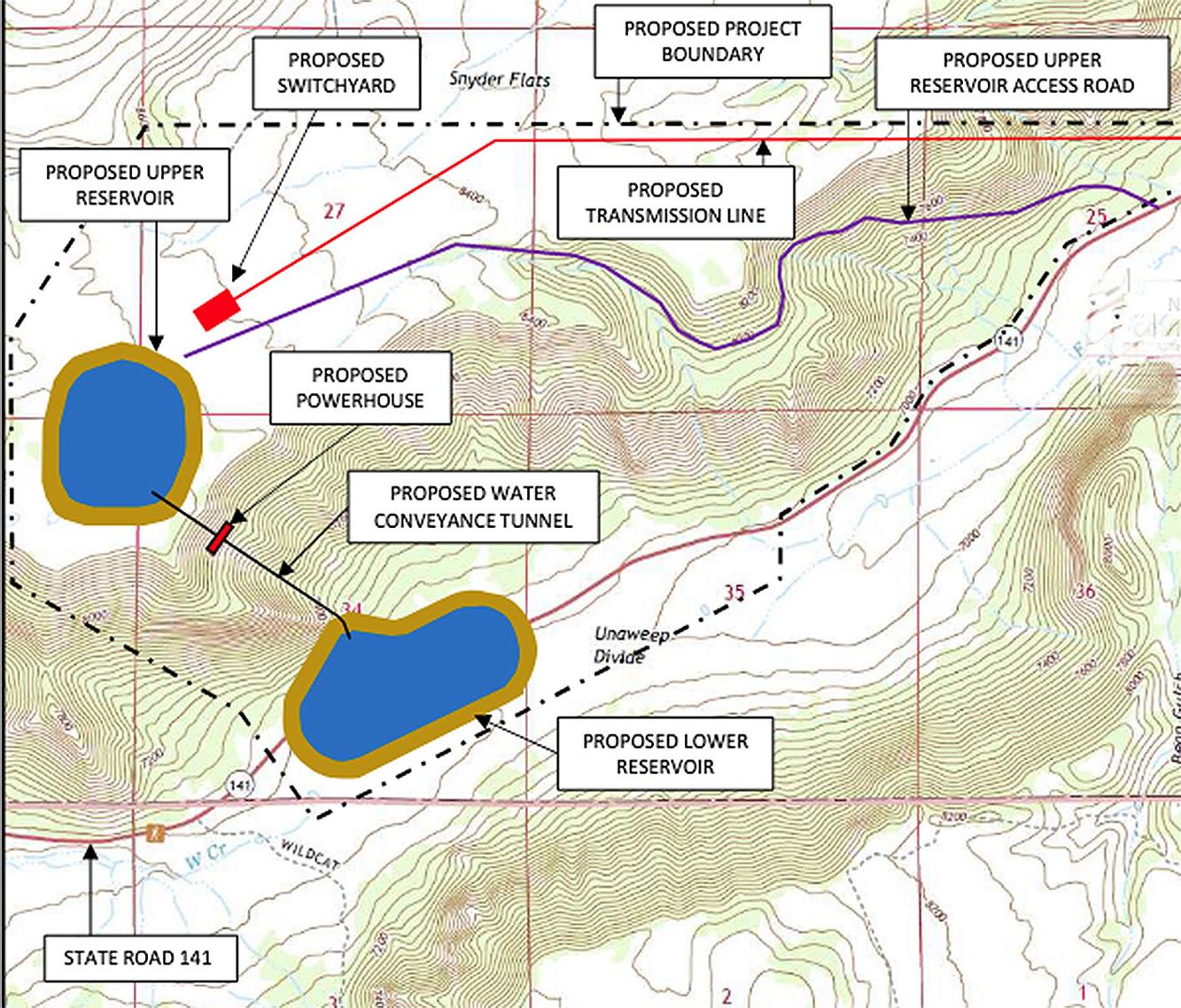
Some people feel torn between the project’s green-power benefits and the question of whether Unaweep Canyon is the right place for it.
Grand Junction City Council member Abe Herman was among people taking part in overflights of the project site provided last week by the nonprofit group EcoFlight. He said he’s interested in how to make the transition to renewable energy, and how utilities can meet state requirements in that regard, and he’d like to see projects like the Xcel one help facilitate that transition.
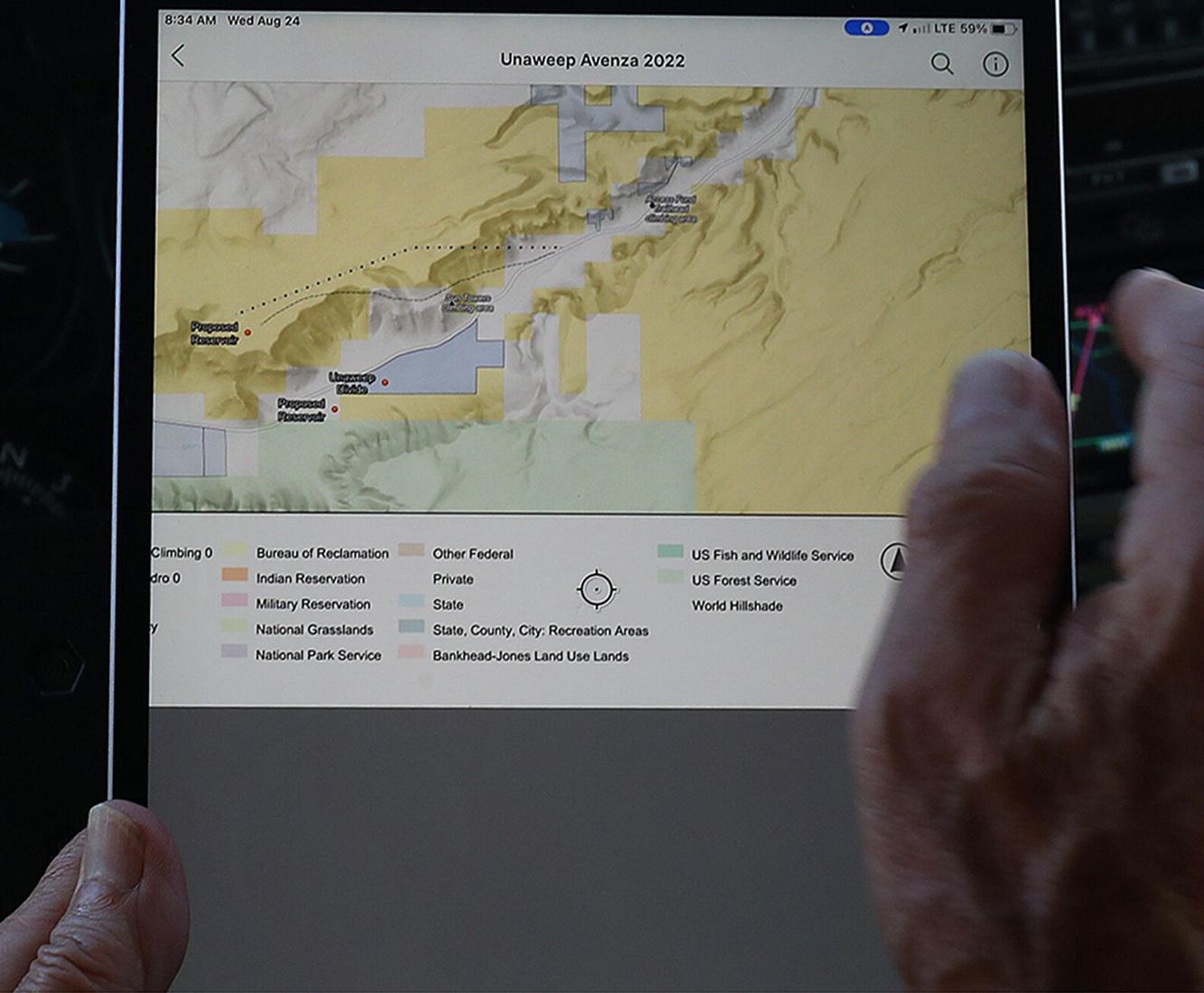
Rickman pointed to another flashpoint in the debate over the proposal.
“I think the most obvious thing to me in this whole discussion is the fact that the West is out of water right now,” he said.
John Weisheit, who is with the group Living Rivers and participated in one of the overflights, sees no place for pumped storage projects in the Colorado River Basin, where he said water already is overallocated.
“This is a consumptive use for a river that doesn’t have anything left to give,” he said.
McCloud said Xcel hasn’t yet applied for a water right for the still-preliminary project, but would have to demonstrate non-injury in water court to get that right.
Also joining in the overflights were Paul Stoner, a board member for the Western Colorado Climbers’ Coalition, and Andrea Hassler, stewardship manager for the Access Fund, a nonprofit focused on access issues for rock-climbers.
The local climbing coalition owns some climbing areas in Unaweep Canyon, and the Access Fund holds conservation easements to protect them.
“At this point we see this (project) as a threat to climbing as proposed,” Hassler said.
A concern for climbers and others is water and power lines that would go up the canyon to serve the project.
Stoner fears that some boulders popular with climbers for bouldering could end up being destroyed to accommodate such infrastructure. Another concern is the project interfering with access to some climbing areas.
Meanwhile, Hassler wonders if Xcel would even be allowed to do anything that runs counter to the protective easements her group holds.

Hassler thinks the project also would change the experience for climbers and others in the canyon.
“It is a remote canyon that allows for solitude and recreation. That would be significantly impacted by the proposed plan by Xcel,” she said.
Stoner said the canyon is a special, quiet place.
“The infrastructure that would be needed, it would just change the nature of the canyon,” he said.
Sitting in neighbor Ray Gooch’s giant, quonset-hut-style workshop, Rickman joined Gooch in bemoaning the potential impacts to the canyon’s peace and quiet, its beauty, its recreational appeal, wildlife such as elk and peregrine falcons, and local property owners.
Gooch added, “One thing that people won’t realize is that the highway’s going to go underwater.”
Xcel anticipates having to reroute Highway 141 around the proposed lower reservoir, working with the Colorado Department of Transportation.
Besides that impact, Gooch and Rickman, who both have been involved with the Gateway- Unaweep Fire District, worry about how construction traffic for the project would affect things such as emergency response times.
“They’re going to be dealing with lots and lots of heavy equipment,” said Rickman, who is chair of the fire district’s board.
McCloud said at the community meeting that public safety is the highest concern for Xcel.
“Any impact on public safety would be something that we’re going to have to work through,” he said.
His message when it comes to all the concerns being raised is that they all will be considered in good time, assuming the project even continues to move forward.
First, Xcel is waiting to see if it gets the preliminary permit. That would prioritize its ability to pursue development of the project in the canyon without some other entity seeking to do so ahead of it.
“At the time that we get that, if and when we get it, we would evaluate if that location does make sense or it does not make sense,” McCloud said in an interview.
The preliminary permit allows Xcel to further explore the feasibility of the project, Aguayo said in her email.
“We would be looking at geology, cost, environmental impacts, and other factors,” she said.
Any effort by Xcel to seek project approval from FERC and from other entities such as the Bureau of Land Management would be a years-long process involving opportunities for public comment.
Aguayo said the state Public Utilities Commission has approved Xcel’s plan to evaluate the potential for the project and spend up to $1 million on the evaluation.
“We will work to share information on our assessment and to hear input from the community if the project moves forward,” she said.
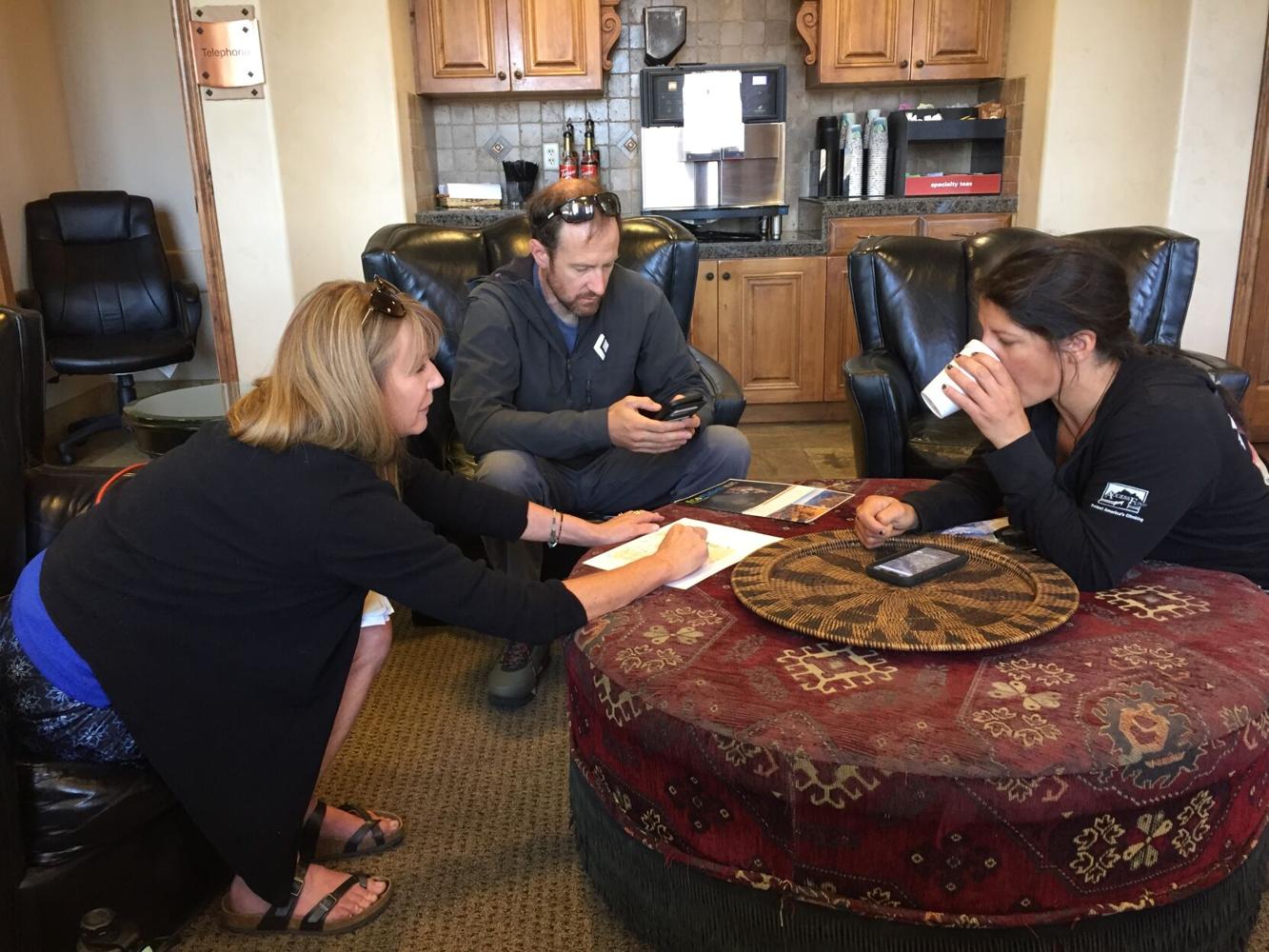
Until FERC decides on the preliminary permit, McCloud said the project is in limbo.
Landowner Ashcraft said he also feels in limbo again, just as he and his late wife Dena did during her long ordeal dealing with cancer and undergoing treatments before her death in 2018.
He said he and his now-partner, Amy Johnson-Lambert, are trying not to live like they’re in limbo.
But he and others such as Rickman worry that even this early in Xcel’s process, it’s already having impacts on the values of their properties because of the mere prospect of the Xcel project someday being built there.
Said Rickman, “Would you want to buy a ranch here in Unaweep Canyon that’s right next to an industrial/commercial power plant? I don’t think so.”
Just how many properties might be directly impacted by the project isn’t yet clear. Project renderings suggest the lower reservoir would sit largely on several private properties, resulting in the loss of people’s land and possibly homes.
It appears the project would take in some of Ashcraft’s property, though it remains to be seen if his home would remain, and if so, if the view from it would include a 73-foot-high dam crossing some of his land.
Ashcraft these days enjoys spending time with Johnson-Lambert in the home where he and Dena once found solace during her health challenges, in a valley where he has enjoyed hiking and exploring much of the acreage visible from his door.
But now he can only wonder what the future holds for his place of respite.
Johnson-Lambert recalls, “I think Paul said if a spaceship had landed on his property and little green men had gotten out of it he would have been less surprised than he was at this project, just because of all the sensitivities of the area.”
As for whether Ashcraft is just another not-in-my-backyard project opponent, he said, “when it’s in your living room, it’s kind of hard to say it’s not in my backyard.”